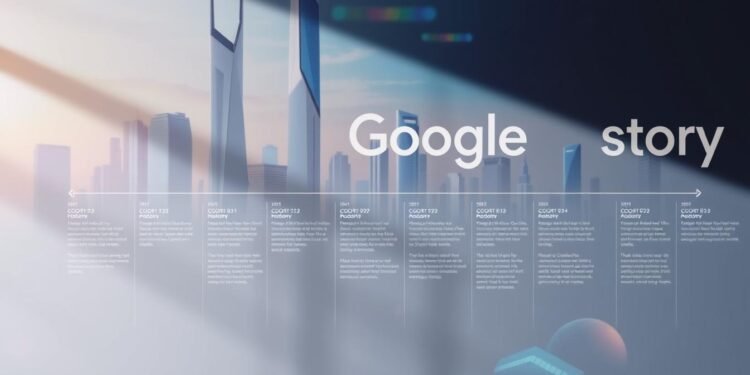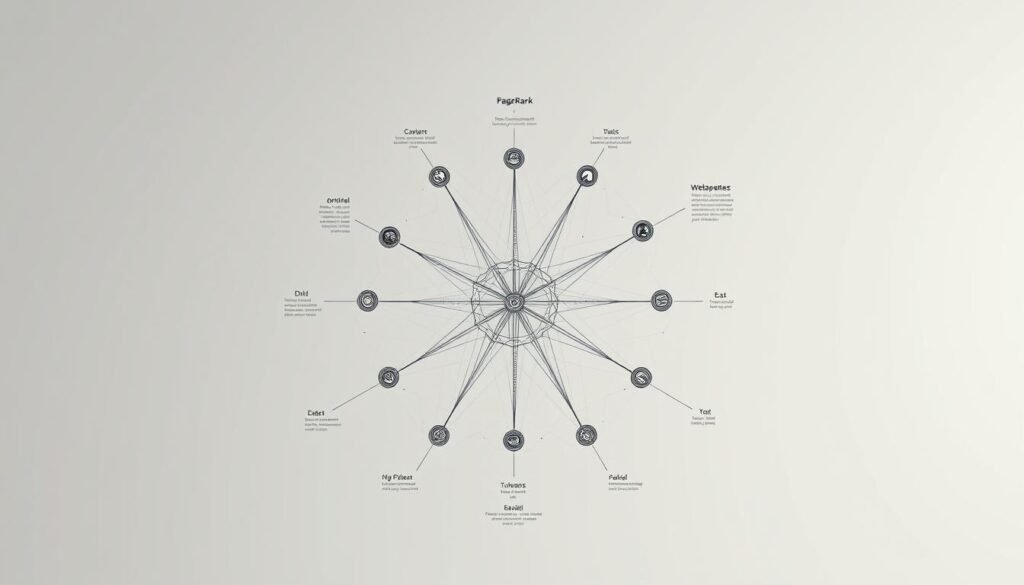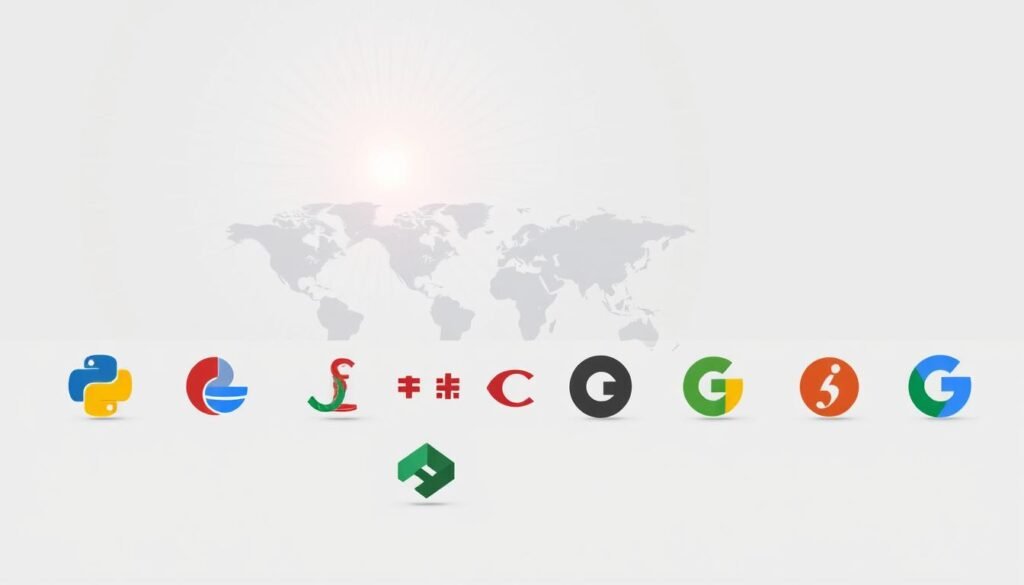What began as a research project in a Stanford dorm room transformed into a tech empire shaping how the world accesses information. The journey from a simple search algorithm to a $1.7 trillion company redefined digital life for billions.
Since 1998, the mission remained clear: organize global data and make it universally accessible. Breakthroughs like PageRank set new standards, while products like Android and Chrome became household names. Today, over 4.3 billion people interact with these innovations daily.
This exploration reveals how technological milestones reshaped modern connectivity. From search dominance to AI advancements, each chapter reflects evolving user needs and industry influence.
Key Takeaways
- Started as a Stanford research project in 1998
- Core mission focuses on organizing global information
- PageRank algorithm revolutionized web search standards
- Android and Chrome expanded digital ecosystem reach
- Products now used by 4.3 billion people worldwide
The Birth of Google: From Backrub to a Global Phenomenon
Stanford graduate students Larry Page and Sergey Brin never imagined their thesis project would redefine the internet. Their collaboration began in 1996, analyzing how web pages linked to one another—a concept that birthed the prototype Backrub. Unlike existing search tools, it prioritized relevance over keyword frequency.
The Stanford Origins: Larry Page and Sergey Brin’s Vision
Page and Brin’s academic research focused on backlinks, the connections between pages. They theorized that pages with more links were more authoritative. This idea became the backbone of their PageRank algorithm, which analyzed 10M+ pages by 1998.
Backrub to Google: The Naming and Early Technology
The name “Google” emerged in 1997, inspired by “googol”—a term for 10100. It reflected their mission to organize vast data. Early servers used Lego-mounted drives to save costs, while a $100K check from Sun Microsystems’ Andy Bechtolsheim funded incorporation.
The PageRank Algorithm: Revolutionizing Web Search
PageRank transformed search engines by ranking pages based on link quality, not just keywords. It slashed processing time and outperformed rivals like AltaVista. By 1998, this system set the standard for accurate, scalable search results.
Key Milestones in the Google Story
The late 1990s marked the beginning of a digital revolution that would redefine how people interact with technology. Strategic funding, bold acquisitions, and relentless innovation fueled this ascent. Each phase introduced tools that became essential to modern life.
1998-2004: Founding, Funding, and Going Public
A $25 million investment in 1999 enabled the move to the iconic Googleplex, a new home for ambitious projects. The 2000 launch of AdWords sparked a $224 billion ad empire, while acquisitions like Blogger (2003) and Keyhole—later Google Earth—expanded its toolkit.
The 2004 IPO was a landmark moment, raising $1.67 billion at $85 per share. This year solidified its financial independence, funding future developments.
2006-2010: Acquiring YouTube and Launching Android
In 2006, a $1.65 billion stock deal brought YouTube into the fold, dominating online video. The next year, Android debuted, now powering over 3 billion devices worldwide. These moves diversified its ecosystem beyond search.
2015 and Beyond: Alphabet Inc. and Diversification
The Alphabet restructuring in 2015 separated core services from moonshot projects. Google X accelerated autonomous vehicle development, while subsidiaries like Waymo and Verily pursued cutting-edge tech. This era prioritized long-term innovation over short-term gains.
Google’s Technological Innovations
Beyond search dominance, the company pioneered technologies that reshaped software development and web browsing. Engineers created solutions for modern computing challenges, from cloud infrastructure to mobile apps. These advancements continue influencing how developers build and users interact with digital tools worldwide.
Programming Languages: Go (Golang) and Dart
Released in 2009, Go emerged as a solution for handling complex things in cloud systems. Its concurrency model outperforms Java and Python in large-scale deployments, now managing 2B+ Docker containers. The language’s simplicity makes it ideal for microservices and distributed networks.
Dart took a different approach by powering Flutter, a framework for cross-platform apps. Over 2 million developers use it to create iOS and Android applications from a single codebase. Both languages demonstrate how targeted design solves specific engineering challenges.
Tools That Shaped the Web: Chrome, Google Maps, and Gmail
Chrome revolutionized browsing with its V8 JavaScript engine, achieving 65% market share by 2023. The browser’s speed became a benchmark, forcing competitors to improve performance. Maps redefined navigation with real-time traffic data, while Gmail’s 2004 April Fool’s launch masked its serious 1GB storage innovation.
These tools share a common thread: solving pain points through technical excellence. Chrome’s tab isolation prevented crashes, Maps eliminated paper directions, and Gmail made searchable inboxes standard. Each product set new expectations for web applications.
Experimental Frontiers: Google X and Autonomous Vehicles
The moonshot division tackled projects like Waymo, whose vehicles drove 20M+ autonomous miles. DeepMind’s AlphaFold made breakthroughs in protein folding, aiding medical research. Such initiatives show how calculated risks can yield transformative examples of innovation.
From languages to self-driving cars, these advancements prove technology’s potential when creativity meets engineering rigor. The next wave may emerge from quantum computing or AI partnerships, continuing this legacy of boundary-pushing examples.
Google’s Global Impact and Cultural Influence
Visual storytelling formats now dominate user engagement, reshaping content consumption habits. The shift from text-heavy results to interactive experiences reflects evolving user expectations. Over 92% of searches worldwide rely on one platform’s algorithms, making it the backbone of digital discovery.
Dominating Search: How Information Access Changed
The search engine’s ranking systems prioritize relevance and authority, setting industry standards. Advanced indexing techniques crawl billions of pages daily, ensuring accurate results. This reliability turned it into a verb, synonymous with finding answers instantly.
Engaging Audiences with Visual Content
Web Stories combine video, text, and images in a tappable, full-screen format. The portrait 9:16 ratio optimizes mobile viewing, while AMP validation ensures fast loading. Brands like Walmart saw 35% higher CTRs using this immersive content type.
Chrome DevTools simplifies AMP checks, verifying metadata and structured data fields. Over 78% of U.S. marketers leverage Stories for campaigns, tapping into Discover feeds across 150+ countries.
Localized Reach: U.S., India, and Brazil Markets
India’s 500M+ internet users prompted tailored features, like multilingual content support. Brazil’s favela mapping initiatives and U.S. hyperlocal ads demonstrate adaptability. Each market’s unique needs drive innovation in indexing and delivery.
From search dominance to Web Stories, these tools redefine global connectivity. They prove how technology adapts to cultural contexts while maintaining universal usability.
Conclusion: The Legacy and Future of the Google Story
The tech giant continues shaping tomorrow with bold innovations. AI advancements like Gemini language models push boundaries in natural language processing, while quantum computing with Sycamore processors redefines problem-solving.
Interactive formats evolve too. Web Stories may soon integrate AR, blending digital and physical worlds. Meanwhile, antitrust challenges highlight growing scrutiny over market dominance.
Healthcare tech gains momentum through Fitbit and Verily, merging wearables with predictive analytics. These efforts showcase how technology adapts to today‘s needs while building the future.
From search algorithms to moonshot projects, the impact remains undeniable. The next chapter will likely blend AI, sustainability, and immersive experiences—continuing its legacy of transformation.
FAQ
Who founded the company, and what was its original name?
Larry Page and Sergey Brin started it at Stanford University. The project was initially called “Backrub” before becoming the brand we know today.
What made their search engine different from others?
The PageRank algorithm ranked pages based on relevance and authority, not just keyword matching. This innovation changed how people found information online.
When did the company go public, and what was its first major acquisition?
The IPO happened in 2004. YouTube became part of the company in 2006, marking a major expansion into video content.
What are some key products that shaped the digital landscape?
Chrome, Maps, and Gmail transformed browsing, navigation, and email. Android also became the world’s most popular mobile operating system.
How did the creation of Alphabet Inc. change its structure?
In 2015, Alphabet became the parent company, allowing separate divisions like Waymo and DeepMind to focus on specialized innovations.
What role does localization play in its global success?
Adapting to markets like India and Brazil with regional languages and features helped expand its reach and user engagement worldwide.
How has the company influenced content creation online?
Formats like Web Stories offer creators a visually rich way to share narratives, enhancing mobile-friendly storytelling.










